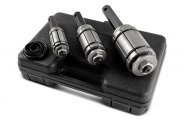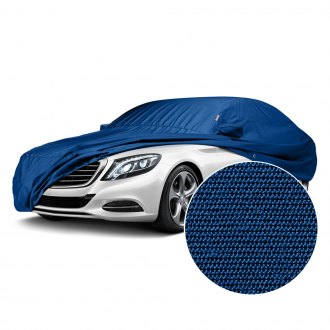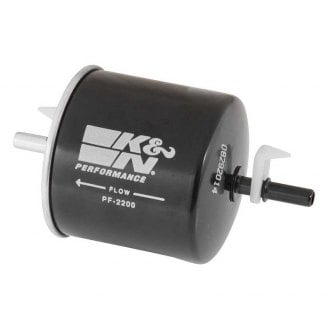Triumph Accessories & Parts
Triumph Parts
Triumph Wheels & Tires
Triumph Exterior Accessories
Triumph Automotive Lighting
Triumph Body Parts
Triumph Interior Accessories
Universal Audio & Electronics
 Installation Parts
Installation Parts Stereos
Stereos Speakers
Speakers Amplifiers
Amplifiers Subwoofers
Subwoofers Cameras & Driver Safety
Cameras & Driver Safety Alarms & Remote Start
Alarms & Remote Start CB Radios & Components
CB Radios & Components Antennas & Components
Antennas & Components Mobile Phone Cables & Connectors
Mobile Phone Cables & Connectors Bluetooth
Bluetooth Equalizers & Processors
Equalizers & Processors Batteries & Power
Batteries & Power Video
Video Radar Detectors
Radar Detectors GPS Systems
GPS Systems Mounts & Chargers
Mounts & Chargers Action Cameras & Accessories
Action Cameras & Accessories
Triumph Automotive Tools
 Oil Change Tools
Oil Change Tools Brake Service Tools
Brake Service Tools Suspension & Steering Service Tools
Suspension & Steering Service Tools Cooling System Service Tools
Cooling System Service Tools Repair Manuals
Repair Manuals Spark Plug & Ignition Tools
Spark Plug & Ignition Tools Wheel & Tire Service Tools
Wheel & Tire Service Tools Engine Service Tools
Engine Service Tools Fuel System Service
Fuel System Service Transmission & Drivetrain Service Tools
Transmission & Drivetrain Service Tools Pullers & Installers
Pullers & Installers A/C Tools & Equipment
A/C Tools & Equipment Electrical System Tools
Electrical System Tools Diagnostic & Testing Tools
Diagnostic & Testing Tools Exhaust System Service Tools
Exhaust System Service Tools Auto Glass Tools
Auto Glass Tools Lockout Kits
Lockout Kits Jacks
Jacks Automotive Lifts & Stands
Automotive Lifts & Stands Automotive Paint
Automotive Paint EV Charging
EV Charging Battery Chargers & Jump Starters
Battery Chargers & Jump Starters Dollies & Movers
Dollies & Movers Creepers
Creepers Auto Detailing
Auto Detailing Key Cutting Machines
Key Cutting Machines Dent Repair Tools
Dent Repair Tools Service Carts
Service Carts Vehicle & Parts Protection
Vehicle & Parts Protection
The first motorized vehicles to bear the Triumph name were motorcycles, and like many early motorcycle makers, the company was originally in the bicycle business. In 1885 Siegfried Bettman of Nuremberg, Germany, immigrated to England and shortly afterward began importing bicycles from Europe, selling them for the first time under the Triumph name a year later. What would eventually be known as the Triumph Cycle Co. Ltd. began building its own bicycles in Coventry, England in 1889. After considering the manufacture of other brands under license, Triumph built the first motorcycle of its own design in 1902. The first bike was powered by a single cylinder 2.25 hp Belgian Minerva engine, and engines from the J.A. Prestwich Company were subsequently used, but beginning in 1905 the first all Triumph machines were produced. The company prospered, becoming Britain’s largest motorcycle manufacturer by 1918. During WWI Triumph supplied more than 30,000 motorcycles to the Allies for the war effort.
In 1921 Triumph purchased the manufacturing facilities of the defunct Dawson Car Company, and there the first Triumph automobile, a 2-seat open touring car, was built in 1923. The 10/20, so named because of its taxable (10) and actual (20) horsepower rating, featured a 1.4L in-line 4-cylinder side-valve engine with 4-speed gearbox. It was the first British car to have hydraulic brakes, albeit at first only on the rear wheels. The 10/20, and its successors the 13/35 and 15/50 sold moderately well, but the first real automobile sales success was the Triumph Super 7. Manufactured from 1927-1934, the Super 7 was a small car, weighing only 1250 lbs. with an 81” wheelbase. It was available in various body styles including open tourer and saloon (sedan), and was powered by an 832cc in-line 4-cylinder side-valve engine. Like most vehicle makers, Triumph saw a severe decline in sales during the depression, and the bicycle business was sold to Raleigh to generate capital.
In 1930 the company decided to change its name and refocus its product line. Now called the Triumph Motor Company, it would no longer try to compete in the mass market with much larger automobile manufacturers, but would instead concentrate on expensive, upmarket cars. The resulting Gloria and Southern Cross saloons, tourers, coupes, and drop head coupes (convertibles) were initially powered by 4 or 6-cylinder in-line engines supplied by Coventry Climax until new Donald Healey designed Triumph engines entered production in 1937. Healey, a renowned racing driver and talented engineer, had come on board in 1934 as Experimental Projects Manager. He designed an engine based on an Alfa Romeo design for another upmarket Triumph model, the Dolomite, and in an attempt to generate publicity for the car entered one in the 1934 Monte Carlo rally. The car was wrecked and the Dolomite, which was more expensive than a Bentley while lacking that brand’s cachet, ended up being a sales flop. In 1936 the motorcycle division was sold to the Ariel Motorcycle Company, and a few years later the remaining company went into receivership. During WWII the Triumph factory was completely destroyed by German bombers.
The Standard Motor Company purchased the brand name and what was left of the Triumph company in 1944. After the war an all new line of cars was created including the aluminum bodied Triumph Roadster and the 1800 Town and Country, Renown, and Mayflower saloons. In 1953 the successor to the Roadster was launched, the Triumph TR2. Although the company would go on to build various saloon cars, the introduction of the TR2 marked the beginning of a long line of sports models that would become the most famous Triumph cars. The car that would become the TR2 was developed because of strong sports car sales in the U.S. and the fact that management at Standard-Triumph saw a substantial price gap in the market between the MG TD and the Jaguar XK120.
The sleek bodied roadster that ensued had sweeping fenders that extended into cutaway doors, a long hood and an abbreviated rear deck. The body was mounted on a ladder type chassis with coil spring independent suspension in front and a live axle and leaf springs in the rear. It was powered by a 121 c.i. in-line 4-cylinder engine that sent its 90 hp to the rear wheels through a 4-speed gearbox. The customer could choose between wire and disc wheels. Optional equipment included radial tires, and Triumph was one of the first sports car manufacturers to offer a hard top, which could also be substituted for the standard soft top at no extra charge. The TR2 exhibited exceptional performance, and the car would go on to have much racing success both at the factory and privateer level. In a magazine road test of the day, the TR2 was described as the lowest price British car that could exceed 100 mph. The TR3 succeeded the TR2 in 1955 and featured a minor front end facelift with a grille and repositioned headlights, front disc brakes, and more horsepower courtesy of bigger carburetors, a larger intake manifold and ported cylinder heads. The TR3 was updated in 1957. The new TR3A had a wider grille and outside door handles, and a 2.2L engine became available as optional equipment.
Standard-Triumph was acquired by Leyland Motors Ltd. in 1960, which after a series of mergers became British Leyland Motor Corporation in 1968. The significantly restyled TR4 debuted in 1961, with a new body created by Italian designer Giovanni Michelotti. Gone were the cutaway doors to allow the installation of wind-up windows, and the revised styling also allowed an increase in trunk space. The chassis was basically the same as previous models, but the track was wider and rack and pinion steering was added. The 105 hp 2.2L engine was made standard and an optional electric overdrive could be selected for 2nd, 3rd, and 4th gear. A unique option was a hard top with a glass rear window and integral roll bar, with detachable steel center panel. In effect, this created a targa roof that predated the Porsche Targa by 5 years. In 1965 the TR4 was updated with independent rear suspension, and the new model was designated TR4A.
The successor to the TR4A was the TR5, which was produced in 1967 and 68. The TR5 was basically the TR4A fitted with a more powerful 2.5L in-line 6-cylinder engine. In England and Europe, the TR5 had mechanical fuel injection, the first British sports car to be so equipped, which enabled it to make an impressive 150 hp. However, the fuel injected engine would not meet strict U.S. emissions standards, so the TR250 was sold in North America instead. It was almost identical to the TR5 with the exception of twin Stromberg carburetors fitted in place of fuel injection, which reduced horsepower to 111, with a concurrent reduction in performance. In 1968, the Karmann designed TR6 was introduced, which would be produced until 1976 and become the best-selling car of the TR line. The TR6’s styling was not radically different than its predecessor, but moving the headlights outboard to the fenders and squaring off the front and rear gave the car a bold, aggressive look. Mechanically the car was much the same as the TR5 and TR250, and the method of fuel delivery continued to be separated by continent, although the cars were badged TR6 on both sides of the Atlantic.
Fears that the U.S. would legislate convertibles off the market resulted in the wedge-shaped TR7 being the successor to the TR6. The 4-cylinder TR7 paled in looks and performance to its predecessor and it was not well received. When laws against soft-top equipped cars proved to be unfounded, a convertible version was belatedly offered in 1979. A V8 engine version called the TR8 was also offered. All variants of the TR7 ended production in 1981. Although the TR series cars are the most well-known, they were not the only sports models manufactured by Triumph. Another Michelotti design, the Triumph Stag, was produced from 1970 to 1978. The 3.0L V8 engine Stag was marketed as a luxury sports car in the vein of the Mercedes Benz SL series models. It was a 4-seat convertible with a B-pillar roll bar that was connected to the windshield frame with a T-bar, and featured fully independent suspension, power rack and pinion steering, power front disc brakes, and power windows. Most Stags were fitted with an automatic transmission, although a 4-speed manual gearbox was available. Air conditioning and alloy wheels were optional.
The Triumph Spitfire was also designed by Giovanni Michelotti and intended to compete with small sports cars like the Austin-Healey Sprite. To save money and make the car as affordable as possible, the Spitfire’s sleek body was mounted on a chassis that was essentially the same as the small Triumph Herald saloon. The entire front end of the Spitfire could be tilted forward for service, and the car featured roll-up windows, which were not common for cars of this class at the time. Powered by a 1.1L 4-cylinder engine, the Spitfire featured coil/wishbone front suspension, rack and pinion steering, and swing axles in the rear with a transverse leaf spring. The Spitfire debuted in 1962 and remained in production until 1980, and was continually revised and improved over the years. A significant variant was the GT6, offered from 1966 to 1972. The GT6 was a sleek 2-door fastback based on the Spitfire body and was powered by a 2.0L in-line 6-cylinder engine.
Triumphs are fun to drive collectables and many models are very affordable. Most models have simple in-line 4-cylinder or 6-cylinder engines that are easy to maintain and repair, and many have modern features like disc brakes. The TR series and Spitfire have timeless styling that is just as attractive today as it was when they were brand new. Such collectible classic have a broad appeal and there is a large network of clubs and Internet forums that are a rich source of information for owners and enthusiasts. You can look to us a resource as well for a complete line of maintenance supplies, repair parts, accessories, and appearance care products that will help keep your Triumph running well and looking great.
Dress your vehicle up. Keep it running at its peak or unleash its hidden power. Make it look like it just rolled off the show room floor. Take care of it and maintain it. You name it, we've got it. We have gathered everything you need to make your Triumph perfect both inside and out. CARiD's job is to meet your every expectation and provide you with quality and durable accessories and parts designed with excellence in mind. Whether you're after luxurious style, brisk performance, or anything in between, our wide assortment covers all the bases.
Featured Products
Popular Products
-
 $6.14 - $17.03
$6.14 - $17.03 -
 $17.58 - $199.95
$17.58 - $199.95 -
 $11.99 - $74.99
$11.99 - $74.99

















